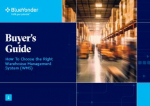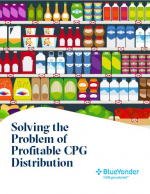New Supply Chain Technology Best Practices
This paper provides information about five new innovative technologies that could greatly impact the supply chain, it delves into the many benefits of each technology as well as some challenges, and it gives you a peek into an amazing future.
An unprecedented wave of innovation engulfs today’s supply chain professionals, and they know that they will have to adapt to survive.
New breakthrough developments, such as drones and driverless vehicles, seem to be everywhere.
One government estimate notes that new and emerging technologies could generate hundreds of thousands of new jobs and hundreds of billions of dollars for the economy over the next ten years.
Whether a company wants to be on the leading edge with these new concepts or not, we strongly believe that all firms must stay abreast of the rapidly moving developments in these fields.
They can lead to market differentiation, competitive advantage, and stronger brand awareness and can eventually create greater customer satisfaction, sustainability, and employee engagement.
Both of the sponsors of this whitepaper and many others have proven this with innovative solutions that are being implemented today.
Categories of Innovation
It’s safe to say that we have never seen a time with so many developments that could immensely impact the supply chain. They fall into two broad categories:
- Informational/analytical innovation: Cloud computing, big data, and cognitive analytics to capture, store, analyze, and derive insights from data, disseminating and capturing data generated by the Internet of Things (IoT).
- Physical innovation: Technologies that take a more physical form: drones, driverless vehicles, robotics, smart glasses/augmented reality, and 3-D printing.
In this white paper, we will focus on the physical innovation.
However, the segmentation is arbitrary, and clearly the two categories are inextricably linked.
Integrating the physical side of innovation with the digital technologies through advanced software will generate the data needed for optimization.
This connectivity will allow machines to learn and expand their range of application dynamically - rather than remain constrained to a fixed, narrow range of application - leading to a dynamic, automated learning environment.
What’s Related




Favorites





